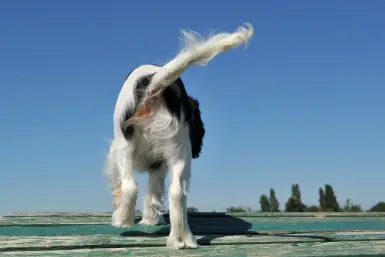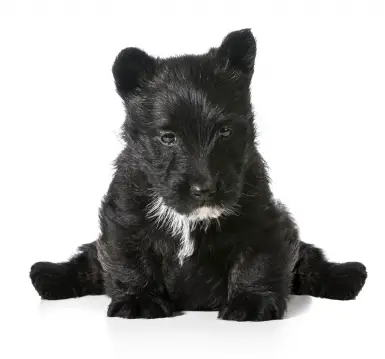
Browse Categories
- Dog Boot Camps
- Test
- Test
- Dogs Please Clicker Training
- Pet Insurance Comparison
- Exercising Pets With An E Scooter
- 10 Reasons Why Guinea Pigs Are Wholesome Little Pets
- Why You Should Use a Shed to House Your Pet
- How can Dog Owners Keep their Carpets Clean?
- How to Keep Your House in Order With Large Pets
- What is the Best Way to Feed a Puppy to Keep Them Healthy
- Pets Please
- All Animals and Pets
- Dogs and Puppies
- Cats and Kittens
- Birds
- Fish
- Reptiles
- All Other Small Pets
- Claws 'N' Paws Events
- PetsInLimbo/Greys4PetsInc.
News Search
PetsPlease News and Advice
Find out why your dog sometimes drags their rear-end
Most dog owners have seen a dog drag his rear-end across the ground or floor, but don`t have a clue why they are doing this.
It is because the dog is trying to empty his anal glands. These glands are located on either side of the anus, at around 4 o` clock and 8 o` clock.
These sacs have a natural liquid secretion which can be from a yellowish to brown to grey color in healthy animals. When the dog defecates, the sacs will usually empty and a small amount of the liquid will coat the stool. This is a scent marker for marking their territory, though it is not needed in the domesticated dog.
This is the reason why dogs sniff at each others rear-ends, they are checking out their personal scent. Most dogs have no trouble emptying these sacs but others struggle with it and can have serious problems releasing the liquid.
These dogs are predisposed to anal sac disease. It is not known why some breeds have more trouble with this than others but breeds it affects most include Dachshunds, Miniature poodles, Chihuahuas and Cavalier King Charles Spaniels. Overweight dogs are also more likely to suffer from this problem but thin dogs can still have trouble with it as well.
You can try external emptying by placing your thumb and forefinger at 4 and 8 o` clock below the anus, an inch or so below the hole. Gently message upward and inwards towards the anus. If nothing comes out try pressing harder. If still nothing comes out you may need to try internal emptying by putting on gloves and inserting your forefinger in the anus 1 to 2 cm. Feel for the swelling and squeeze to release. Change hands for the other side.
Most owners will opt to let their vet handle this unpleasant chore. You will need to get him to the vet and have this done though, if you`re not up to it, as he will be in pain and discomfort until the pressure is released. If the duct gets blocked, it could get infected so let your vet take care of it if you don`t feel you can. Usually, there are no complications with this surgery and it is advised for young to middle aged dogs to have this procedure done 4 times a year.


